 Homebrew development on the Genesis is at an all-time high, and only a few select consoles have a more dynamic and active community. New games are being worked on constantly, and new publishers have arisen to tend to the demand. Now, aspiring developers have a great chance of actually bringing physical releases of all-new games to a console that Sega abandoned two decades ago.
Homebrew development on the Genesis is at an all-time high, and only a few select consoles have a more dynamic and active community. New games are being worked on constantly, and new publishers have arisen to tend to the demand. Now, aspiring developers have a great chance of actually bringing physical releases of all-new games to a console that Sega abandoned two decades ago.
One of those developers is English programmer Matt Phillips. Programming since the age of nine, he got his start with the Commodore 64 and QBASIC for DOS. Phillips completed adegree in Computer & Video Games in 2008 and has since worked on over a dozen released titles at Traveler’s Tales, Crytek UK, and Dambuster Studios. Recently, he turned his attention to the Genesis, creating a wonderful-looking platformer named Tanglewood, in which a young fox-like creature gets lost in a dangerous wood and must survive the night and find his back to his pack’s lair. Matt started a Kickstarter campaign to back his new project, and it reached its goal in December 2016. He recently began an expanded campaign on Megafounder to reach the stretch goal of a Dreamcast release.
We were fortunate to sit with Matt for some Q&A about his exciting new Genesis homebrew title!
Sega-16: Is this your first homebrew game? What previous experience do you have in this area?
Matt Phillips: Yes, this is my first homebrew! I’ve had plenty of ideas over the years but neither the time, drive, or resources to make it happen. Things seemed to fall into place for this one. I had no assembly experience at all before starting and no experience with the 68000 or the Mega Drive’s internals – I had to learn all this stuff from scratch, pretty much. I think the closest I’ve ever got before was messing around with Saturn and Dreamcast SDKs, but that was in C.
Sega-16: How did the idea for Tanglewood come about?
Matt Phillips: The game started out as a silhouetted, Limbo-like environment that evolved from a simple test platformer I was making as an engine test. I was using just Sonic graphics with altered palettes at the time since I had no artist, but very quickly others became interested in what I was doing and encouraged me to start creating a complete game from it.
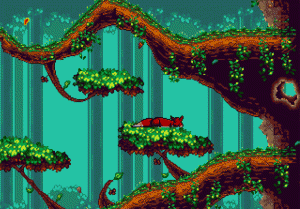 I pulled together some rough ideas for a character and setting, it was quite vague but I knew I wanted it to be a dark and generally unsettling experience – a nighttime setting full of monsters that give chase, and no way for the player to attack directly. The initial environment artwork was bright and cheery, the exact opposite of what I had in mind, which spawned the decision to start the game in a tranquil daytime setting and use palette swaps to advance the time of day throughout each level and have the monsters only come out at night. That generated a lot of ideas about how to dynamically change the way the game is played depending on the time of day, making sure the player is always on edge at night time.
I pulled together some rough ideas for a character and setting, it was quite vague but I knew I wanted it to be a dark and generally unsettling experience – a nighttime setting full of monsters that give chase, and no way for the player to attack directly. The initial environment artwork was bright and cheery, the exact opposite of what I had in mind, which spawned the decision to start the game in a tranquil daytime setting and use palette swaps to advance the time of day throughout each level and have the monsters only come out at night. That generated a lot of ideas about how to dynamically change the way the game is played depending on the time of day, making sure the player is always on edge at night time.
Sega-16: Why the Genesis? Was it a conscious decision to make a game for the console, or did it just work out that way?
Matt Phillips: It was my first console as a child, and the one I have the fondest memories of. My introduction to coding on the C64 and my love for Sonic The Hedgehog combined at a very early age, and I knew I wanted to make a game like it one day. I paid more attention to job adverts in the back of gaming magazines more so than the actual articles. It was an obsession to work in the games industry, and my daydreams involved my Mega Drive sat at home with my very own cartridge shoved in. As I grew up the idea never left me, nagging me throughout my whole career to one day see it through.
During my time at Traveler’s Tales I was fortunate enough to work with some of the 68000 coding champions of the ’90s, and they reinforced the idea and encouraged me to finally give it a try. I started up a blog to keep track of my progress, found an assembler and a help forum, and it just exploded from there.
Sega-16: How long has the game been in development? Is there anyone else working with you?
Matt Phillips: Since starting the initial engine tests, it’s been about five years. Initial progress was slow since I was learning, my spare time was limited, and nobody else was on board to help with artwork, so it very slowly built up until it caught the interest of some pixel artist friends. After some fresh artwork came in I was keen to get it moving faster, so I started scheduling time to work on it and saved up some money to buy better equipment and worked towards a fully playable demo.
Once the demo was complete, I was encouraged by friends to turn to Kickstarter and make this thing happen properly. I was really shy about it, since it would have meant quitting my job to concentrate on it full-time, a real risky move for my living situation. I’m very glad I did, though, it was a roaring success and my dream game is finally being made!
There are now four contractors working with me – two character artists, an environment artist, and a composer. Having a proper team is amazing. The game is coming together so fast.
Sega-16: What kind of software are you using for development? Did you have to create any tools, or were you able to just use what was already out there?
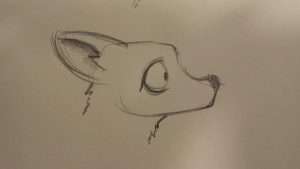 Matt Phillips: In the early days, I started out with a text editor, a free assembler and various emulators. I’ve since managed to get hold of a real SNASM-based Mega Drive devkit, so now I’m fortunate enough to be able to use the assembler and debugger that comes with it. That was a huge win for productivity, since the whole game is written in pure assembly, and being able to properly debug code with source on real hardware was a godsend for working with a codebase that was growing by the day. It also let me live the real ’90s programming experience – my game is being made like it would have been 25 years ago, which makes my inner child happy!
Matt Phillips: In the early days, I started out with a text editor, a free assembler and various emulators. I’ve since managed to get hold of a real SNASM-based Mega Drive devkit, so now I’m fortunate enough to be able to use the assembler and debugger that comes with it. That was a huge win for productivity, since the whole game is written in pure assembly, and being able to properly debug code with source on real hardware was a godsend for working with a codebase that was growing by the day. It also let me live the real ’90s programming experience – my game is being made like it would have been 25 years ago, which makes my inner child happy!
I’ve written a complete suite of tools for level editing, environment art, sprite animation and audio conversion. It’s a bespoke tool chain for my engine that allows for rapid prototyping of new levels, and fast iteration on the existing ones. It’s quick and easy to throw together new puzzle ideas and mechanics tests, which lends well to the iterative nature of how we’re designing the levels.
Sega-16: The story is interesting and a bit different than other platformers. How much of the game world has been designed thus far?
Matt Phillips: Most of the game – the setting, story, level overviews and cut scenes – has been on paper for a few years now, and a first pass of nearly all the level tilesets are already in and working. Some of the level design details and puzzles are still in progress, but so far, an iterative process has been working really well, so I don’t expect the paper design will be very verbose for any of them.
Sega-16: The main character, Nymn, acquires new powers during the game. How many do you plan to include and what kinds can we expect?
Matt Phillips: There are four powers – glide, time stop, beast taming, and one I’m keeping quiet! Some of the puzzles require more than one to be used, and the complexity grew very quickly so I doubt we’ll introduce more than four at this stage. I’m also out of palette space, unless you want an invisibility power!
Sega-16: How many levels will be in the game?
Matt Phillips: There are nine environments, split into either three or four acts each, so between 27 and 36 acts in total. There’s also a scene where Nymn needs to backtrack to a previous level, but I haven’t counted that twice! There might be a secret act or two if development time allows.
Sega-16: Are you planning to use homebrew publishers like WaterMelon Games or Piko Interactive, or will you be going another publishing route?
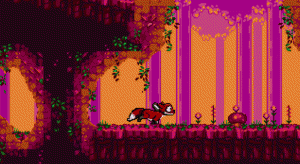 Matt Phillips: I’ve spoken to both on various occasions, as well as another here in the UK, but I’m trying to get as far as I can without the need for outside help to keep the costs of the carts low and allow for some flexibility. There are a few different cart types with varying requirements, and some still undergoing discussion, so it would be wise to have a production environment I can have quick access to for making prototypes and corrections. If it all goes horribly wrong, maybe I’ll give WM another shout!
Matt Phillips: I’ve spoken to both on various occasions, as well as another here in the UK, but I’m trying to get as far as I can without the need for outside help to keep the costs of the carts low and allow for some flexibility. There are a few different cart types with varying requirements, and some still undergoing discussion, so it would be wise to have a production environment I can have quick access to for making prototypes and corrections. If it all goes horribly wrong, maybe I’ll give WM another shout!
Sega-16: Will you be using donor carts for the physical release or new materials?
Matt Phillips: All new materials – I’d like full control over the design to ensure they seem as authentic and nostalgic as possible, plus I don’t want to ruffle any feathers at SEGA’s legal department so I can’t use carts with their logos and branding already molded in.
Our thanks to Matt for taking some time to answer our questions! We’ll have a teaser on Tanglewood as soon as newer information becomes available. Until then, head over to the game’s website, check out the latest screen shots of the game’s first level, and watch the demo video!

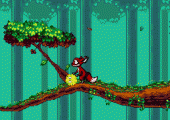
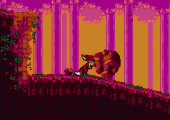
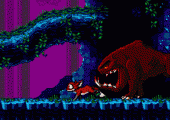
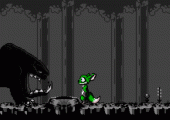
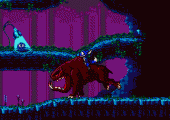
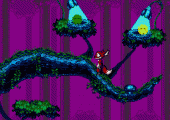
I like this game.
When does it comes to the stores in europe?
My girlfriend likes this one 2!